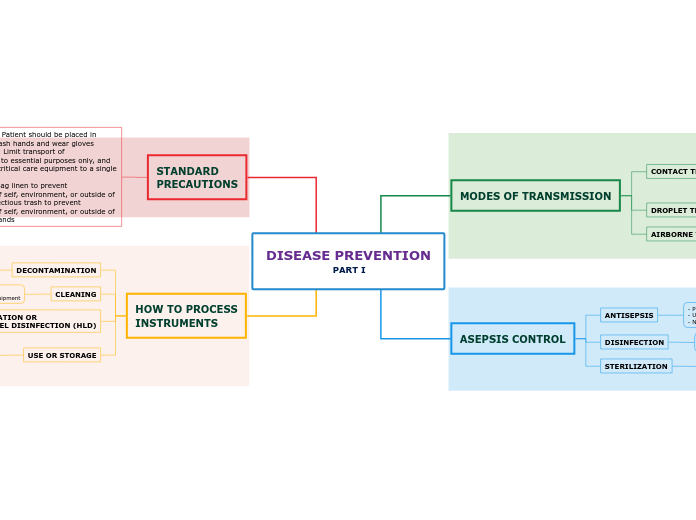DISEASE PREVENTION
PART I
The inventor of Eisenhower Matrix is Dwight David Eisenhower – an American army general and statesman who served as the 34th President of the United States from 1953 to 1961. His method helps us prioritize by urgency and importance.
HOW TO PROCESS
INSTRUMENTS
These tasks are not important but they still need to be done. The question you have to address yourself: Who can do this for you?
USE OR STORAGE
- When a health care worker’s skin is pierced or cut by contaminated needles or sharp instruments
- When fluids are splashed on the mucous membranes of the health care worker
STERILIZATION OR
HIGH-LEVEL DISINFECTION (HLD)
- Goal is to kill all microorganisms
- When sterilization is not available, HLD is the only other possible option
CLEANING
- Using the correct tools to scrub equipment
- Goal is to remove organic material on the equipment
DECONTAMINATION
- Making instruments safer to handle by decreasing pathogen
- Preventing organic material from sticking to equipment
STANDARD
PRECAUTIONS
Tasks that are not urgent nor important should be eliminated so you will not waste time doing them.
BEFORE CARE: Patient should be placed in private room, wash hands and wear gloves
DURING CARE: Limit transport of patient/resident to essential purposes only, and limit use of noncritical care equipment to a single patient
AFTER CARE: Bag linen to prevent contamination of self, environment, or outside of bag, discard infectious trash to prevent contamination of self, environment, or outside of bag and wash hands
CONTACT PRECAUTIONS
Used for patients known or suspected to be Infected with microorganisms that can be spread in direct or indirect contact.
DROPLET PRECAUTIONS
Used for patients known or suspected to be Infected with pathogens transmitted by droplets though coughing or sneezing.
AIRBORNE PRECAUTIONS
Used for patients known or suspected to be infected with pathogens that can be transmitted via air.
ASEPSIS CONTROL
These tasks are still important but they're not urgent so you can schedule a time to do them.
STERILIZATION
- Destroys all microorganisms (both pathogenic and non-pathogenic)
DISINFECTION
- Destroys or kills pathogenic organisms
- Not always effecting against spores and viruses
ANTISEPSIS
- Prevent or inhibit growth of pathogenic organisms
- Usually on the skin
- Not effective against spores and viruses
MODES OF TRANSMISSION
Urgent and Important tasks that need to be done now.
AIRBORNE TRANSMISSION
When some microorganisms are carried by air, remain in air and dispersed over long periods of time
DROPLET TRANSMISSION
Transfers of small droplets when an infected person coughs or sneezes or talks during medical procedures
CONTACT TRANSMISSION
Direct Contact
transfer of microorganisms directly from an infected person to someone else
Indirect Contact
an object/person that transfers the microorganism from infected person to a new host

